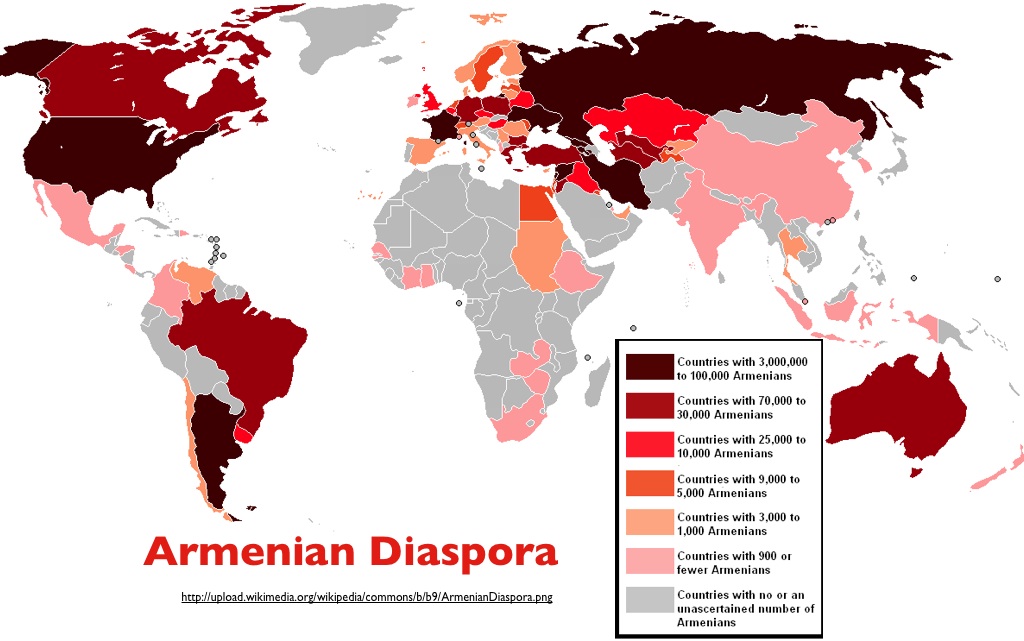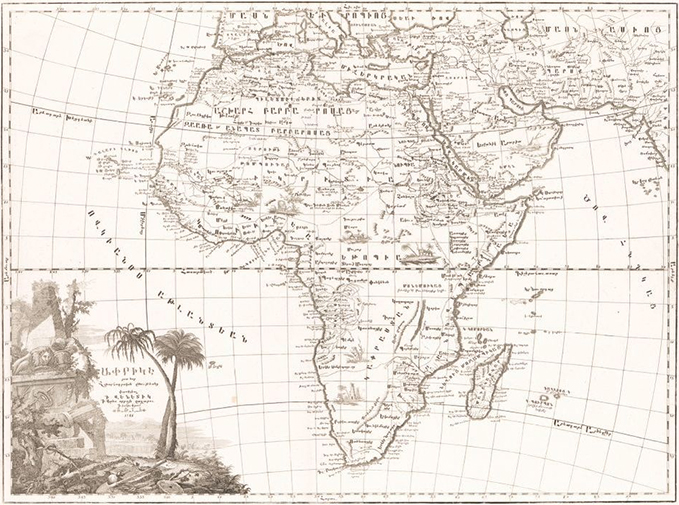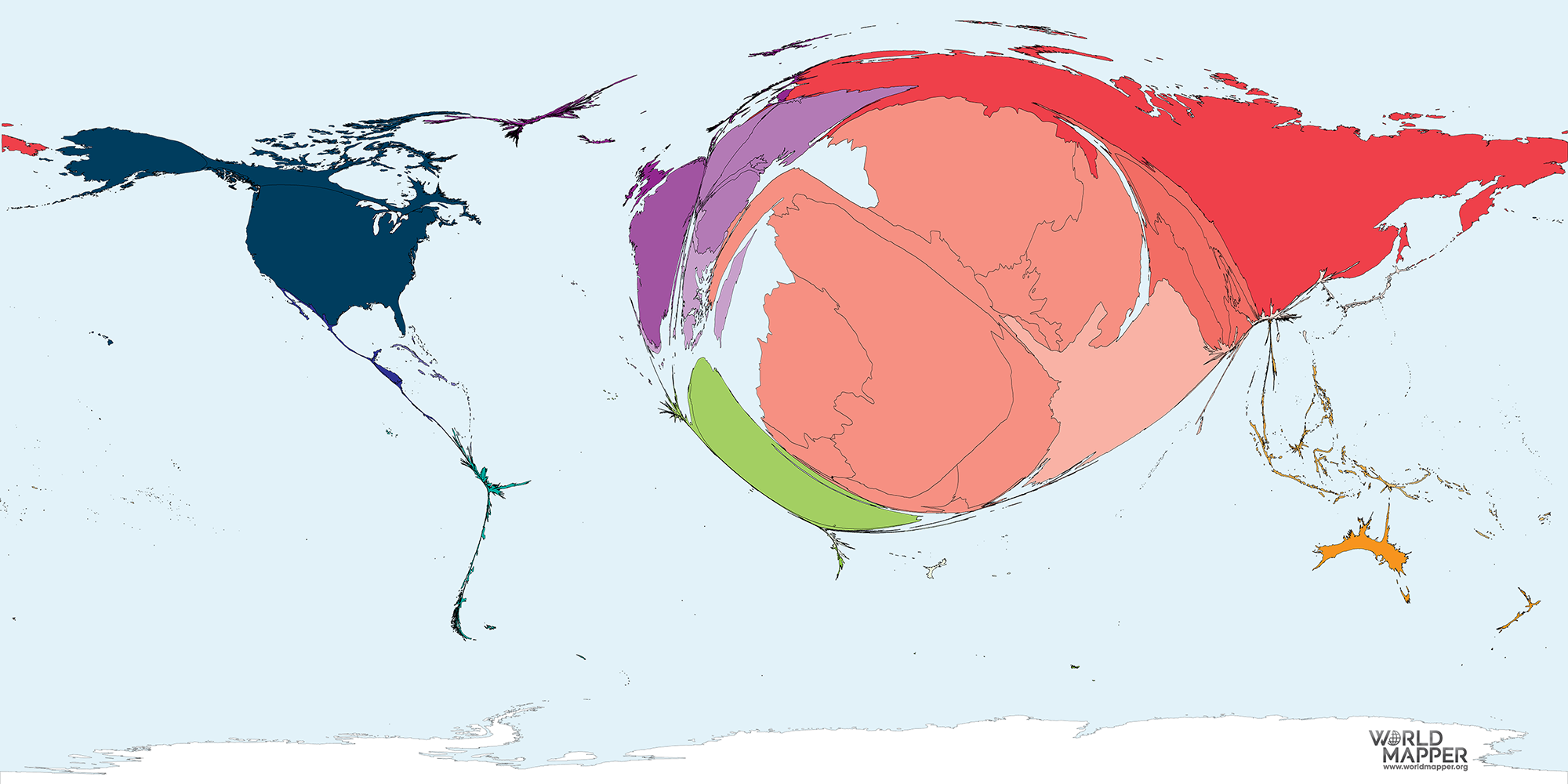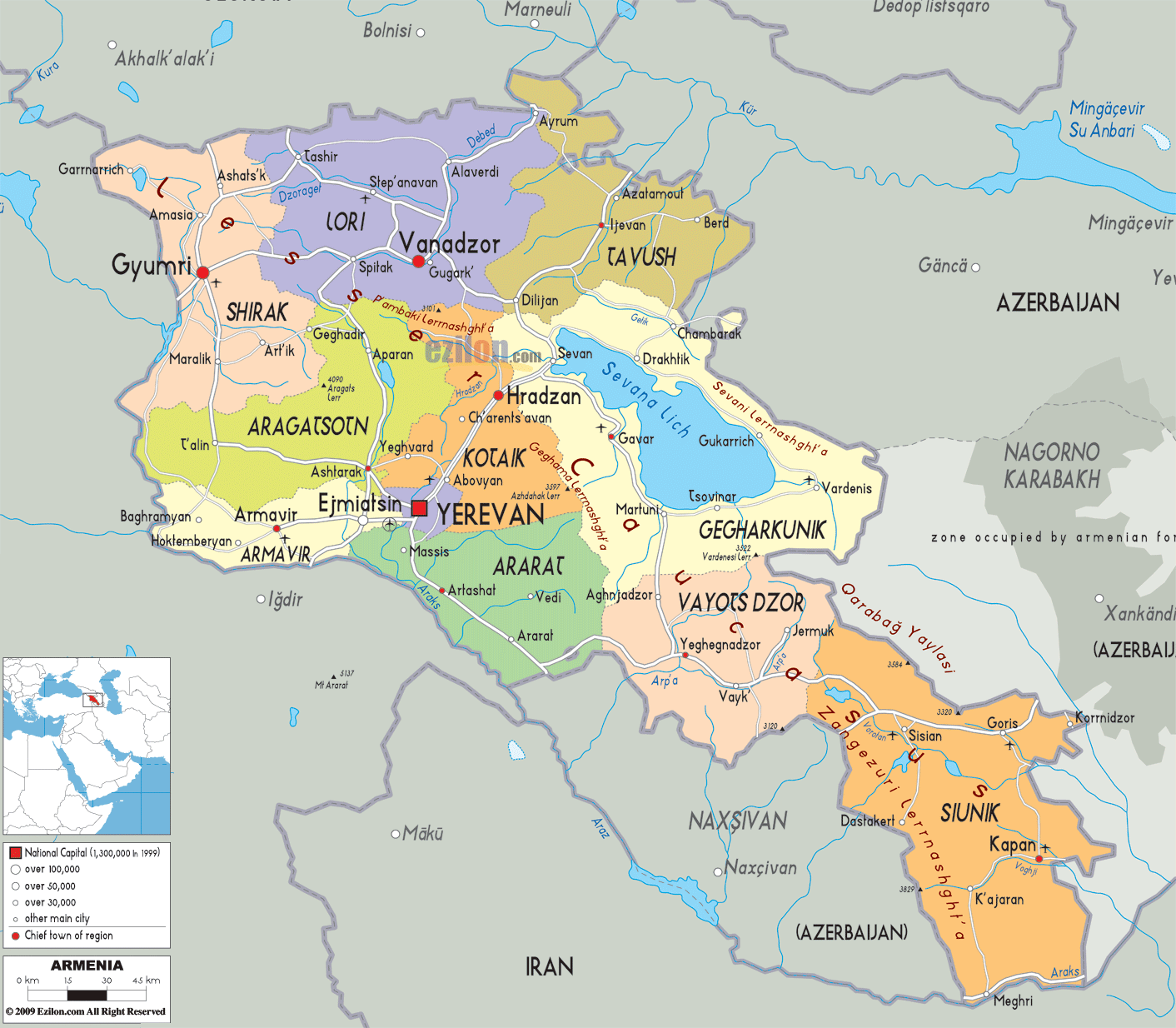
3366) Many Armenian Diasporas, Then and Now Armenian Genocide Resource Center
The Armenian language (հայերեն լեզու, Armenian pronunciation: [hɑjɛɹɛn lɛzu] — hayeren lezow, conventional short hayeren) is an Indo-European language spoken by the Armenian people. It is the official language of the Republic of Armenia as well as in the region of Nagorno-Karabakh.

Library of Congress digitizes Armenianlanguage maps from 18th c.
Armenian-language maps showing history (1 C, 51 F) Armenian-language SVG maps (1 C, 27 F) C. C. (Mappemonde arménienne. 1 - 28 000 000 env) Hadriamus et Petrus Damianus Sehoonebeek fratres faciebant - btv1b7200300d (10 F) U. Unidentified maps in Armenian (3 F)

Map of Greek and Armenian populated areas before the genocides and today. Armenian History
Status. According to Ethnologue, Armenian is spoken worldwide by about 5,924,320 people, of whom 3,140,000 live in the Republic of Armenia (2001 census).Eastern Armenian is the official language of the Republic of Armenia, a former Soviet Republic located in the Caucasus.Many of them also speak Russian. Close to half of Armenian speakers today live outside of Armenia.

Spread of Armenian Language Worldmapper
Armenian ( endonym: հայերեն ( reformed ), հայերէն ( classical ), hayeren, pronounced [hɑjɛˈɾɛn]) is an Indo-European language and the sole member of an independent branch of that language family. It is the native language of the Armenian people and the official language of Armenia.

Political Map of Armenia Ezilon Maps
Armenian is an Indo-European language in Armenia, Georgia, and various countries in the Middle East. Modern Standard Armenian has two major forms: Eastern, spoken in the former Soviet Union, and Western, spoken by diasporic communities throughout the Middle East. Language Variation

Iran, Azerbaijan, Kurdistan & Armenia Carte linguistique / Linguistic map
Language map of Armenia Data from Armenia's 2011 Census Disclaimer: the Armenian census survey asked exclusively about first and second languages usage. The total number of speakers represented here does not account for the actual number of speakers of each language, as some people speak might speak more than two languages. Armenian Kurmanji

Armenia Population Density Armenia, Historical maps, Armenian history
This map therefore only shows 47.8% of all speakers of Armenian. The territory omitted is Armenia. The maps in the 2005 language data series are made from data on the number of people speaking a language as their first-language, that is the language they would use at home. This map uses data several sources, the main one being Ethnologue (15th.

Ermenice
Armenian belongs to an independent branch of the Indo-European language family which has about 6.7 million speakers worldwide, the majority of which live in Armenia and the Nagorno-Karabakh region of the Southern Caucasus.

History of the Armenian Language YouTube
Armenian ( endonym: հայերեն ( reformed ), հայերէն ( classical ), hayeren, pronounced [hɑjɛˈɾɛn]) is an Indo-European language and the sole member of an independent branch of that language family. It is the native language of the Armenian people and the official language of Armenia.

Western Armenian Language Fund Forestalling Extinction Keghart
Map Map of Armenian dialects in the early 20th century: -owm dialects, roughly corresponding to Eastern Armenian. -el dialects. -gë dialects, roughly corresponding to Western Armenian. List -owm dialects -el dialects -gë dialects Sources Adjarian, Hrachia (1909).

[High Res] Map of the 16 provinces of Greater Armenia PeopleOfAr Map, Armenia, Armenian history
The Library of Congress has recently digitized two Armenian-language maps of Africa and Europe from the 18th century, completing the four-map set of the world that also includes Asia and America.

The Other Side of Europe Armenia My Country? Europe.
Armenian is an Indo-European language spoken in the Caucasus mountains and also used by the Armenian Diaspora.It is its own independent branch of the family of the Indo-European languages. From ancient and modern languages, Indo-Iranian seems to be the most closely related to Armenian.. While it contains many Indo-European roots, its phonology has been influenced by neighboring Caucasian.

Distribution of Armenians in 1900 vs 2000 Vivid Maps Map, Historical maps, History geography
The following 22 files are in this category, out of 22 total. Acharian dialects map.png 4,120 × 3,331; 3.08 MB Armenian dialects, Adjarian 1909.png 1,757 × 754; 86 KB Armenian Language distribution map.png 962 × 661; 124 KB Armenian language in the Russian Empire (1897).svg 4,648 × 2,744; 1.4 MB Armenian USC2000 PHS.svg 959 × 593; 173 KB

The Caucasus, ethnolinguistic makeup Vivid Maps
The maps in the 2005 language data series are made from data on the number of people speaking a language as their first-language, that is the language they would use at home. Data sources This map uses data several sources, the main one being Ethnologue (15th Edition, 2005). Estimating the number of speakers of a language is fraught with.

Armenian Language Worldmapper
- WorldAtlas What Languages Are Spoken In Armenia? A tourist town in Armenia. A majority of the population of the ethnically homogeneous nation of Armenia speak Armenian as the first language. It is also the nation's official language. Russian, introduced during the Russian rule in Armenia, is also widely spoken across the country.

Changing Demographics distribution of Armenians and Greeks in 1914 and 2014 [ Armenian History
Armenian (Հայերէն) Armenian is an Indo-European language spoken mainly in Armenia (Հայաստան [Hayastan]) and in Nagorno-Karabakh, a de facto, though unrecognised, independent republic in the Nagorno-Karabakh region of the South Caucasus.This area is also known as the Republic of Artsakh (Արցախի Հանրապետություն), and is recognised internationally as part of.